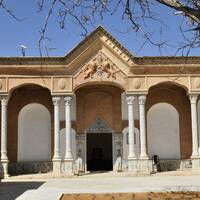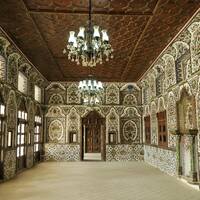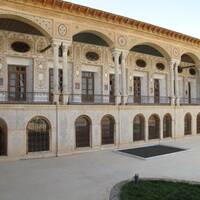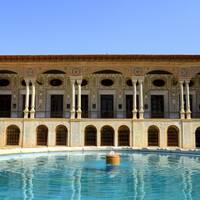Being considered as one of the oldest materials available to the human, stone plays the main role in the building of the lasting monuments. However, if we want to mention to one glorious construction of architecture and stone carving, among the contemporary buildings, Khoda Rahm Khan Castle is certainly one of them.
The castle is located in Chaleshtar, five kilometers to Shahr-e Kord, the capital city of Chahar Mahal and Bakhtiari, the province. Based upon the date recorded on one of its columns, the building was constructed in 1321 AH, matched with 1282 SH.
As obvious by its name, the castle was constructed by Khoda Rahm Khan, combining Qajar and European architecture with carved stone columns.
This historical complex includes different parts such as stone façade, ruler house, internal house, bathhouse, stores and stables. The castle has two internal and external yards. The exterior yard or the same ruler house is famous as the palace of Khoda Rahm Khan and the internal yard is best-known as Sotoudeh castle that are connected to each other through a hall.
The ruler house of the castle was used as a public place for villagers who lived in the surrounding villages under the rule of Khoda Rahm Khan and has 38 stone columns with façade and porch (Iwan) interesting among the motifs that were used in decorations of the ruler house are flower and bird, floral motifs and angel that were carved skillfully and masterly.
The internal part of the castle was dedicated to the family of the ruler and his intimates; it has ten stone columns. The main feature of this part is using the London style of painting that is a combination of Iranian and Western paintings. Motifs like flower and vase, Lili and Majnoon story, Yusuf and Zulaikha story, Islamic motifs and Quran verses are common in this style. Using London style of painting reached its height in Qajar period.
This castle was the residence and study house of Ali Akbar Dehkhoda where he used two main books of the castle in writing his two noble works “Amsal o Hekam” (meaning proverbs) and Loghatnameh (meaning dictionary).





